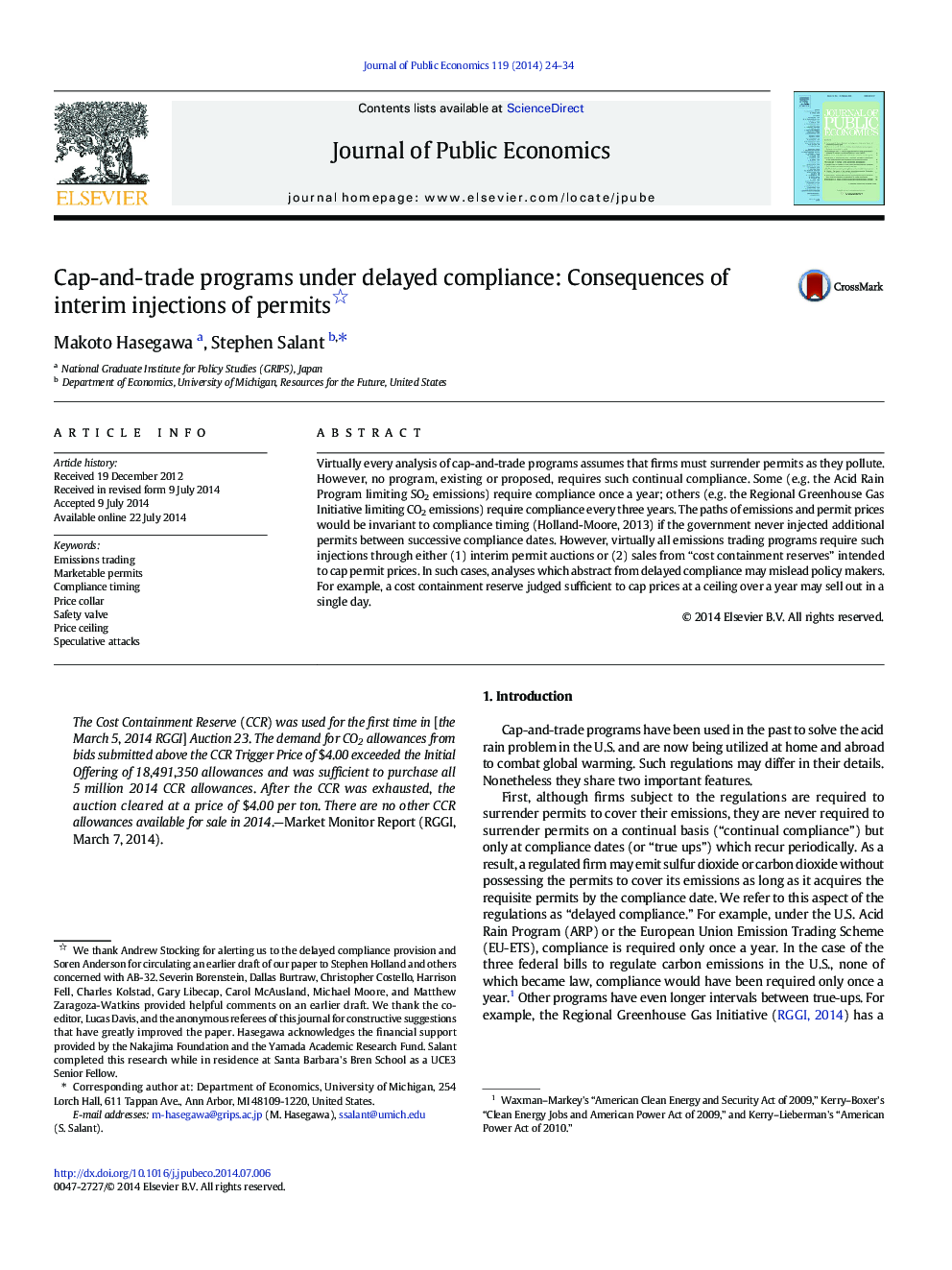| Article ID | Journal | Published Year | Pages | File Type |
|---|---|---|---|---|
| 969076 | Journal of Public Economics | 2014 | 11 Pages |
•Analyses of cap-and-trade programs assume firms are continually in compliance.•In fact firms must be in overall compliance only at dates 1-3 years apart.•In assuming continual compliance, analysts risk making erroneous predictions.•For example, analysts underestimate the reserves needed to defend price ceilings.•We replace the erroneous assumption with an institutionally appropriate one.
Virtually every analysis of cap-and-trade programs assumes that firms must surrender permits as they pollute. However, no program, existing or proposed, requires such continual compliance. Some (e.g. the Acid Rain Program limiting SO2 emissions) require compliance once a year; others (e.g. the Regional Greenhouse Gas Initiative limiting CO2 emissions) require compliance every three years. The paths of emissions and permit prices would be invariant to compliance timing (Holland-Moore, 2013) if the government never injected additional permits between successive compliance dates. However, virtually all emissions trading programs require such injections through either (1) interim permit auctions or (2) sales from “cost containment reserves” intended to cap permit prices. In such cases, analyses which abstract from delayed compliance may mislead policy makers. For example, a cost containment reserve judged sufficient to cap prices at a ceiling over a year may sell out in a single day.
